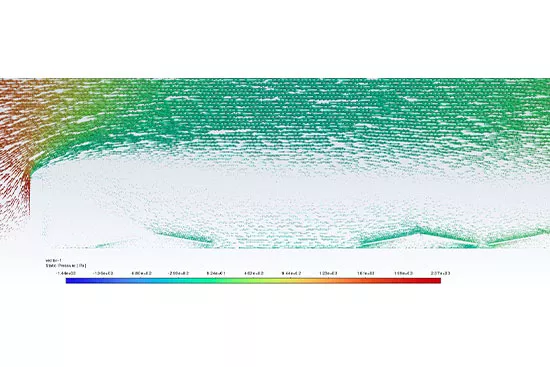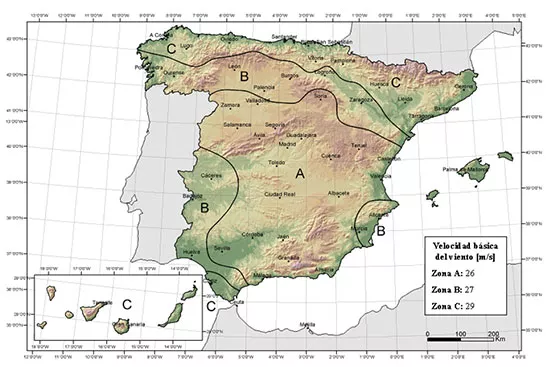Wind load analysis for structures
Need to calculate wind load on structure?
Wind load analysis is an engineering process that aims to assess the forces and pressures exerted by the wind on a construction made of steel or other metallic materials.
During the design and analysis of a structure, it is essential to consider wind loads to ensure its stability, safety, and durability over time.
This calculation involves factors such as wind speed and direction, the shape and height of the structure, as well as other elements that may influence wind forces.
In this regard, wind tunnel tests has become a valuable tool for conducting a more precise and detailed analysis of wind loads on complex metallic structures.
Key factors in wind load analysis
Wind speed
Wind pressure
Wind profile
Coefficients and adjustments
Importance of wind load analysis
- Structural Safety: Wind can exert significant forces on a structure, especially in exposed areas or tall buildings. Accurate and appropriate wind load calculations allow for the design of a structure to withstand these forces, ensuring it remains stable and free from failures or collapses that could endanger people’s safety.
- Compliance with Standards and Regulations: Building codes and structural regulations require the analysis and calculation of wind loads to obtain necessary authorizations and permits. Adhering to these standards ensures that the construction is safe and in compliance with local and national regulations.
- Design Optimization: By taking wind loads into account from the early stages of design, it is possible to optimize the structure, using materials and resources efficiently. This can lead to more cost-effective and sustainable constructions without compromising safety or quality.
- Prevention of Damage and Costly Repairs: Proper wind load calculation prevents damage to the structure due to wind action, which can save significant costs by avoiding expensive repairs and additional expenses in the future.
Contact us
Basic information on data protection
Responsible: Cero Metros Cuadrados, S.L.
Purposes: Manage the sending of information that you request. Sending commercial communications.
Legitimation: Consent. You can withdraw consent at any time.
Recipients: Your data will not be transferred to third parties except in case of legal obligation.
Data subject's rights: To access, oppose, rectify and have their data deleted, as well as other rights as explained in the additional information.
You can access additional and extended information at this link.
FAQ
What is a wind tunnel test?
Wind tunnel test, also known as Computational Fluid Dynamics (CFD) simulation, is an advanced technique used to study and analyze the airflow behavior around objects or structures. Although it does not involve a physical wind tunnel, as the name suggests, it is a virtual tool that digitally recreates airflow under various conditions and environments.
How does wind tunnel test work?
In wind tunnel test, a specialized Computational Fluid Dynamics (CFD) software is used. This software relies on mathematical equations and complex algorithms to solve and simulate three-dimensional airflow. It virtually divides the study area into small elements or cells and calculates the behavior of airflow in each of them. It takes into account initial conditions, such as wind speed and direction, and also considers specific characteristics of the object or structure being analyzed.
The software performs iterative calculations to solve the flow equations and provides detailed results on how the wind interacts with the object. It generates a visual representation of air currents, areas of high and low pressure, and the aerodynamic forces acting on the structure.



